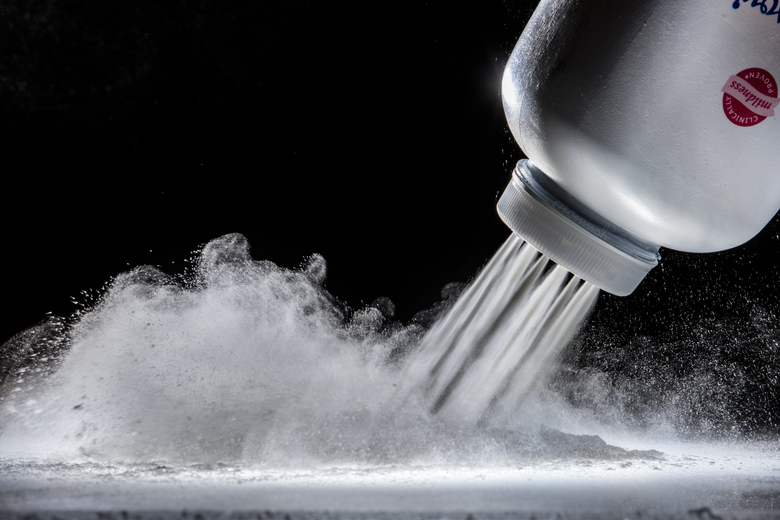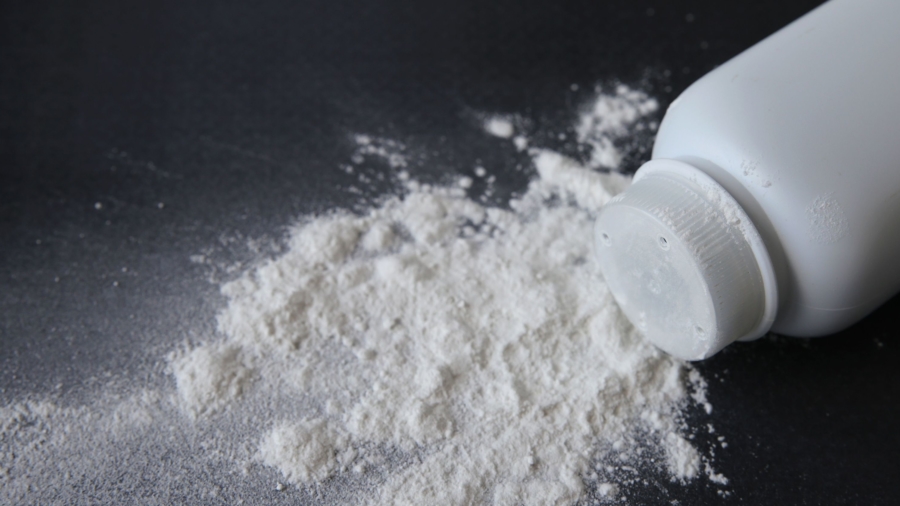Written by Katie Hanna
Talcum powder was formulated in 1892 by Dr. Frederick B. Kilmer, director of scientific affairs for Johnson & Johnson. It was created by adding scented perfume to Italian talcum and marketed along with sanitary napkins to midwives and mothers in a tin can labeled “for toilet and nursery.”
It quickly gained popularity with women not only to prevent skin rash on their babies but as a feminine hygiene product to control odor and wetness. The traditional usage continues today, as well as its use in contraceptive devices to reduce friction.
While others have entered the market, Johnson & Johnson has been the dominant player for more than 100 years. And while talc products contributed just $420 million to the companies $76.5 billion in revenue reported in 2017, it’s talcum-based baby powder remains one of its corner-stone products.
But for the last twenty years, many people have come forward claiming to have developed cancer after many years, sometimes lifelong, use of the well-known product which is known to sometimes contain asbestos in its natural form. Asbestos is a known carcinogen, reported by the World Health Organization as having no safe level of exposure.
In 1997, Darlene Coker became the first person to file suit over cancer-related talcum powder use. She was 52 years old at the time and had been diagnosed with Mesothelioma, a rare form of cancer which has been predominantly linked to exposure to asbestos.
She wondered how she could’ve possibly been exposed to asbestos since most cases occur in miners, factory workers, insulation manufacturers, and related trades, none of which were relevant to her.
Her attorney Herschel Hobson discovered her lifelong use of talcum powder as the most likely perpetrator. Together, they sued Johnson & Johnson claiming their toxic product was responsible for her prognosis. However, they were unable to meet their burden of proof and had to drop the suit. She passed away in 2009.
In that same year, a second case was filed in a Federal District Court in South Dakota. This time, plaintiff Deane Berg, who was diagnosed with ovarian cancer in 2006, claimed her hygienic use of talcum powder for over 30 years caused her diagnosis.
Johnson & Johnson offered Berg a settlement deal of $1.3 million with an added confidentiality stipulation which she refused. While the jury did find Johnson & Johnson negligent, they did not award damages to the plaintiff. Berg and her attorneys may not have received the desired outcome, but the finding of negligence has paved the way for many other plaintiffs to come forward.
In 2017, a case was filed in Los Angeles Superior Court, this time with an unprecedented $417 million verdict by jurors. Plaintiff Eva Echeverria, diagnosed with ovarian cancer in 2007 claimed to have used Johnson’s Baby Powder from age 11 until 2016 when she became aware of its link to cancer.
After a two day deliberation, jurors awarded Echeverria $70 million in compensatory damages and $347 million in punitive damages. Since then, the verdict has been overturned and the defendant has been granted a new trial. However, before they could breathe a collective sigh of relief, they found themselves in court yet again.
In 2018, Johnson & Johnson was ordered to pay $4.69 billion to 22 women and their families who claimed their product caused them to develop ovarian cancer. This time in a Missouri circuit court, $4.14 billion in punitive damages and $550 million in compensatory damages were awarded as a result of the company failing to warn users about the risks associated with the use of its talcum-based products.
While the pharmaceutical giant is facing more than 9,000 plaintiffs in cases involving talcum powder products, it “remains confident that its products do not contain asbestos and do not cause ovarian cancer,” it said in a statement.
So, are they truly negligent?
The American Cancer Society reported mixed results in their own studies and they can not conclusively state whether or not talcum powder products are carcinogenic to humans.
Their report also indicates that in 1976, the Cosmetic, Toiletry, and Fragrances Association (CTFA), issued “voluntary” guidelines which state that all talc products in the United States should be free from “detectable amounts” of asbestos according to their standards.
The National Cancer Institute stated, “The weight of evidence does not support an association between perineal talc exposure and an increased risk of ovarian cancer.”
In a prospective study of talc use and ovarian cancer by the Journal of the National Cancer Institute, it was stated that the association between talcum powder and ovarian cancer “remains controversial because of limited supporting biologic evidence and the potential for recall bias or selection bias in case-control studies.”
Despite the lack of evidence reported by these major health regulators, Johnson & Johnson remains in the hot seat.
An explosive investigative report was recently released by Reuters which indicates that from 1971 to 2000, the company’s talcum powders sometimes tested positive for trace amounts of asbestos.
Furthermore, documents have been released that paint company executives, mine managers, scientists, doctors and lawyers in an anxious light over the issue and how to address it while simultaneously choosing to withhold the information from regulators and the public.
The Reuters report contains documents dating as far back as the 1950s that describe contaminants in Johnson & Johnson talc that are fibrous and needle-like, tremolite. Tremolite is one of six minerals that in their naturally occurring fibrous form are classified as asbestos.
In 1976, Johnson & Johnson reported to the U.S. Food and Drug Administration that none of the talc tested between 1972 and 1973 contained asbestos. They did not disclose, however, that tests were done by 3rd party laboratories between 1972 and 1975 that DID find asbestos in the talc.
Lawyers for Johnson & Johnson have responded in court testimony by stating that the asbestos detected in many of these reports refers to talc intended for industrial use. They have also claimed that many of the minerals referred to are actually the non-asbestos forms that are harmless.
In addition, they have claimed that some of these tests picked up asbestos occurring in the background that could have contaminated samples.
Claims between the pharma behemoth and their growing list of plaintiffs remain highly contested on both sides and the fight does not appear to have a clear end in sight. Nor does there appear to be any indication that their wide line of talcum products will be removed from shelves anytime soon.
Citations:
COKER v. JOHNSON & JOHNSON et al, United States District Court, Jefferson County, Texas, 1997.
BERG v. JOHNSON & JOHNSON et al, United States District Court, D. South Dakota, Southern Division, 2013.
ECHEVERRIA v. JOHNSON & JOHNSON, United States Superior Court of Los Angeles, California, 2017
INGHAM et al v. JOHNSON & JOHNSON et al, United States District Court Eastern District of Missouri, 2018
JNCI: Journal of the National Cancer Institute, Volume 92, Issue 3, 2 February 2000, Pages 249–252, https://doi.org/10.1093/jnci/92.3.249

Katie Terrell Hanna
Katie Terrell Hanna is a professional freelance writer and consultant. She developed an interest in litigation journalism after an internship at the Office of State Attorney in the 15th Judicial Circuit of Palm Beach County, Florida. She is also a graduate of the Center for Pre-Law/Law Related Careers at the Gerald A. Williams Center for Pre-Law in West Palm Beach, Florida and was inducted into the Law Honor Society of her graduating class.

Get A Free Talcum Powder Case Review
If you or your loved one was affected after using Talcum Powder, Fill out the form and get a free case review.


